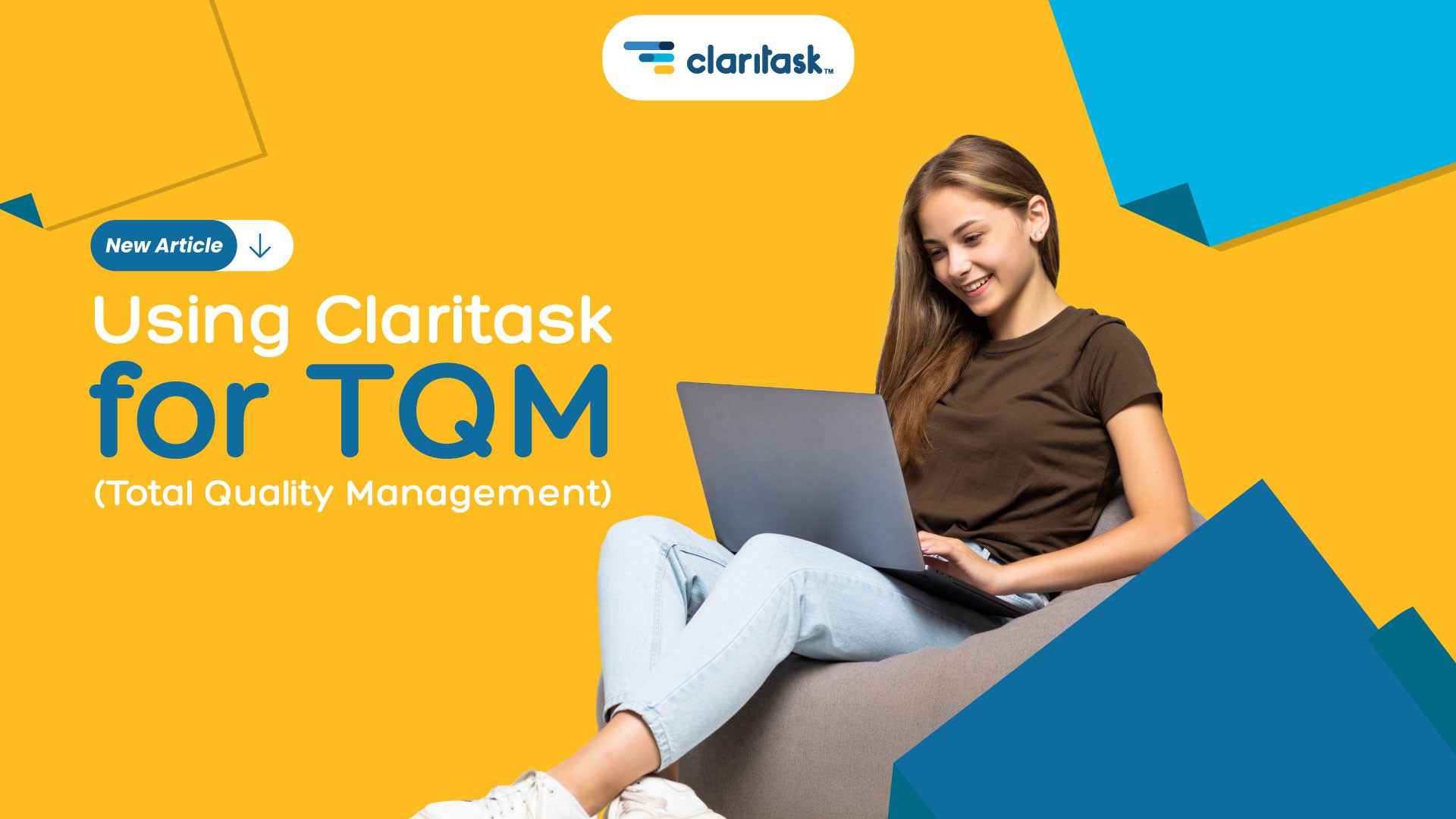Using Claritask for TQM
Claritask is a powerful project management system that can execute precisely what managers desire, it’s also the right software to use for implementing TQM (Total Quality Management). The main goal of TQM is to cement overall improvements to an organization’s outputs (goods & services). For example, let’s say an investment firm hires a construction company, that uses Claritask software, to build a new skyscraper. Thousands of processes are carried out to stay within the customer-preferred design, from setting up daily safety equipment, parts production, to hanging steel and windows. Faults will be found and potential enhancements will be noticed all along the way. This is where TQM takes over to optimize the process of anything from making a building, setting up a new production facility, to implementing a new service experience.

The following steps are the chronological principles to TQM, and how they fit into using a project management system like Claritask:
Customer Focus
The success of any business is dependent on its customer satisfaction. No matter where a company implements improvements, the customer controls whether the efforts were important. Typically, using a project management system, clients will set their design parameters and managers schedule follow up meetings to ensure deliverables are in sync with expectations. A disgruntled client could report they don’t like something while a product or service is in process, this is precisely where TQM comes into play since this is where an organization would collect this negative feedback, understand what went wrong, and want to standardize a way of doing things to ensure future customer satisfaction 100% of the time. On a side note, if a disgruntled client leaves a negative review after a product or service is completed, be sure to use a reputation management system like Irevu to catch what is being said about your business publicly before others read it as well.
Total Employee Involvement
Total employee engagement can only be obtained if the fear of speaking out or losing their job is removed as a risk. Employees must feel empowered to speak up about improvements that can be made within the organization within a proper work environment. This is where Claritask software thrives, all employees start work from one centralized dashboard seeing all the tasks they are assigned to as well as viewing workspaces of what fellow colleagues are working on. Managers delegate tasks, but employees are free to leave comments down to the task level to report inefficiencies or issues they are experiencing. This way managers can make improvements.
Process-Centered
As staff perform their tasks, its important for managers to continuously monitor performance and watch for any unexpected variation in work performance. Managers should strive to be concise in their instruction and standardize tasks work to boost efficiency, and maybe even completing a project ahead of schedule (greatly outperforming customer expectations).
Integrated System
An organization should have a system to check and make sure all processes are being carried out as instructed for quality control across all functions. This is where using Claritask really shines since managers can see what everyone is working on all the time.
Fact-Based Decision Making
To judge how well a company is performing, proper data must be collected. Not only must employees be monitored for standardized operating performance, but other variable information like supplies or output quality must be collected for managers to make the best decisions on the right data.
Strategic and Systematic Approach
This involves management quality control. For example, perhaps there’s a few underperforming employees, impulsively the manager may have a desire to just fire these staff and hire new ones, hopefully, better working employees. However, this could be a mistake; and leaves too much up to chance. Instead, a company should just find out why certain employees are underperforming in the first place and adjust in the hiring or training process, this incremental improvement allows a business to move onto other areas for continual improvement.
Continual Improvement
The long game isn’t won by focusing on the overall, but by making incremental improvements everywhere noticed. To find where advancements can be made, managers should test the potential of their employees from time to time by setting challenging due dates and monitoring the time it takes each staff member to complete tasks thanks to Claritasks “time tracking” feature.
Clear Communication
Effective communication plays a significant role in proper task performance, improving staff morale, and enabling managers to motivate employees. Besides being able to leave comments and speak in a feed within Claritask. An amenity of using Claritask is that it seamlessly connects to its sister software “Convosio” a live chat system where employees can communicate, upload files, photos, or screenshots in real time, this helps immensely when a manager needs to make changes to a project immediately.
Conclusion
The advantages of using TQM are numerous, firstly, it leads to defect reduction. When all processes have been improved to a higher standard there’s going to be a reduced number of product defects or services gone wrong. This leads to a nice cost of savings for a business; since there’s a decrease in the time or money spent to resolve issues or errors in a company’s goods and services. With more time and money to spend elsewhere, a business can focus on other areas of improvement like product enhancements or just prioritizing the production of their highest quality deliverables making the world filled with satisfied customers!
Start implementing a TQM approach in your organization today and let Clartiaks lead the way.




